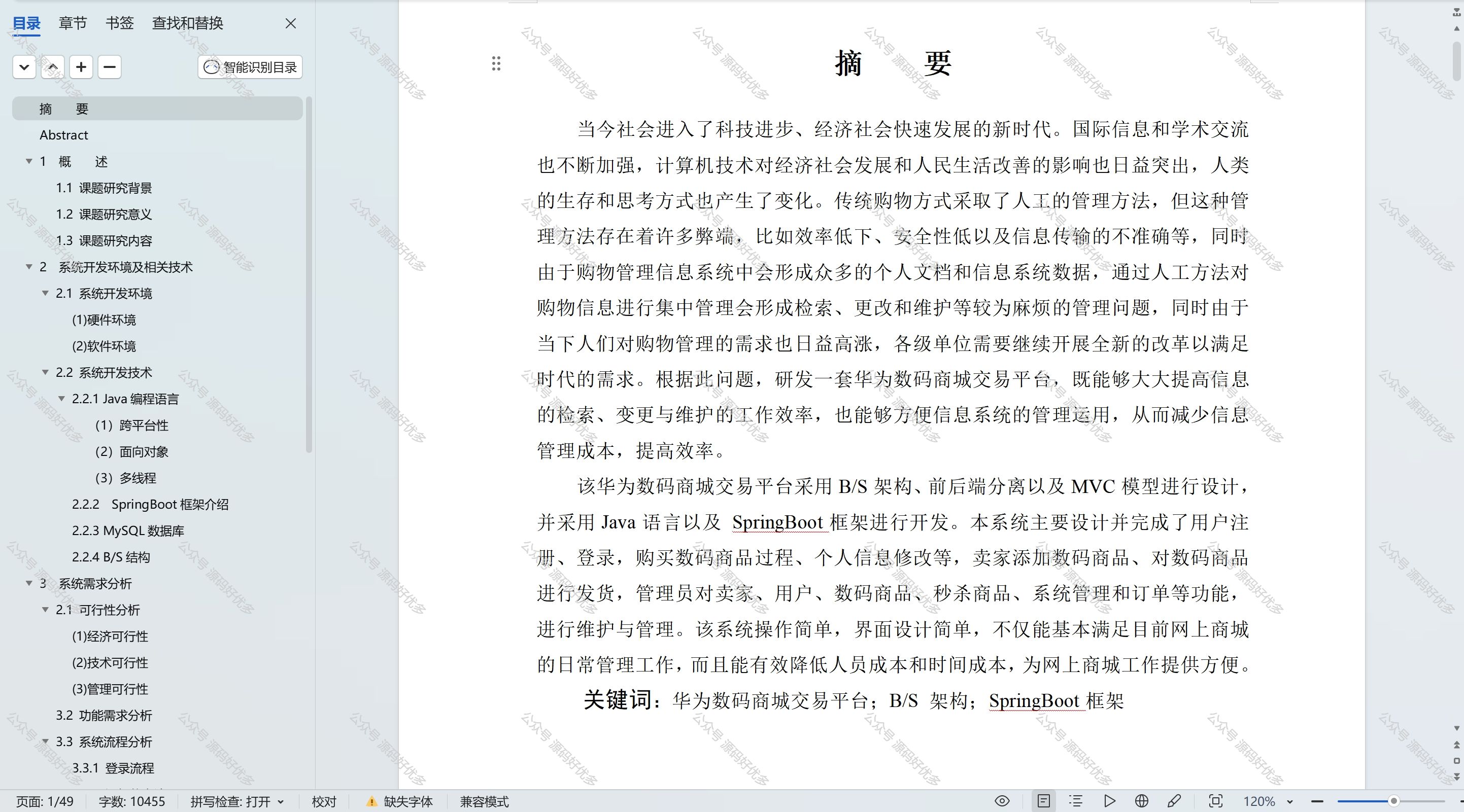GPT-2简介
GPT-2是一个由OpenAI于2019年提出的自回归语言模型。与GPT-1相比,仍基于Transformer Decoder架构,但是做出了一定改进。
模型规格上:
GPT-1有117M参数,为下游微调任务提供预训练模型。
GPT-2显著增加了模型规模,提供了多种模型,如:124M、355M、774M和1.5B
数据集大小上:
GPT-2训练于数据量约有45GB的WebText数据集。数据集的数据收集于Reddit中的网络文章。
模型架构上:
GPT-2维持了GPT-1的Decoder-only架构,但是讲Decoder Block增加至48层,采用了更深层的注意力机制和更大的前馈网络维度并改进了正则化。同时,GPT-2加入了可学习的位置编码。将Layer Norm前置于模型获得输入后。一个额外的Layer Norm被添加于最后一个自注意力Block后。
参数初始化上:
参数初始化上,使用了一个Special Scaled Initialization。Special Scaled Initialization是Xavier Normalization的一种变体,使用了额外的缩放。将因子n调整为残差连接的次数,也就是block数量的两倍。
任务设定
一般语言模型的训练目标设置为:
但是,GPT-2通过同样的无监督模型来完成多个既定任务,学习目标变为:
这种修改被称为任务设定。对于同样的输入,模型应该根据不同的任务输出不同的结果。
翻译任务

文本总结

其他下游任务:基于zero-shot或few-shot的文本生成、文本总结、文本翻译、QA问答、文本分类。
基于MindSpore的GPT-2实践
复习Masked Multi Self-Attention
#安装mindnlp 0.4.0套件
!pip install mindnlp==0.4.0
!pip uninstall soundfile -y
!pip install https://ms-release.obs.cn-north-4.myhuaweicloud.com/2.3.1/MindSpore/unified/aarch64/mindspore-2.3.1-cp39-cp39-linux_aarch64.whl --trusted-host ms-release.obs.cn-north-4.myhuaweicloud.com -i https://pypi.tuna.tsinghua.edu.cn/simple假设一个批大小为1,序列长度为10,特征维度为768的输入
# GPT-2 Masked Self-Attention# assume an input of self-attention x, input_dim is 768
batch_size, seq_len, embed_dim = 1, 10, 768x = Tensor(np.random.randn(batch_size, seq_len, embed_dim), mindspore.float32)
x.shape将输入复制三份作为Q、K、V。

import mindspore.ops as ops
from mindnlp.transformers.ms_utils import Conv1D# an input will be multipled by three matrixs Wq, Wk, Wv
# concat the three matrixs, you will get a matrix of (768, 768*3)
# x matmul matrix, the output would be (batch_size, seq_len, 768*3)
c_attn = Conv1D(3 * embed_dim, embed_dim)
output = c_attn(x)
# split the output into q, k, v
query, key, value = ops.Split(axis=2, output_num=3)(output)
query.shape, key.shape, value.shape将注意力分头
# split self-attention into multi_head attention
def split_heads(tensor, num_heads, attn_head_size):'''Spilit hidden_size dim into attn_head_size and num_headsArgs:tensor: tensor to splitnum_heads: how many heads to splitattn_head_size: hidden_size of each headReturn:Multi-Head tensor'''new_shape = tensor.shape[:-1] + (num_heads, attn_head_size)tensor = tensor.view(new_shape)return ops.transpose(tensor, (0, 2, 1, 3))num_heads = 12
attn_head_size = embed_dim // num_headsquery = split_heads(query, num_heads, attn_head_size)
key = split_heads(key, num_heads, attn_head_size)
value = split_heads(value, num_heads, attn_head_size)query.shape, key.shape, value.shape将Q、K相乘,得到注意力分数
# get self-attention score
attn_weights = ops.matmul(query, key.swapaxes(-1, -2))
attn_weights.shape将注意力分数加上掩码,防止模型看见“未来”的数据

# get mask attn_weighs
max_positions = seq_len
# create a mask matrix
bias = Tensor(np.tril(np.ones((max_positions, max_positions))).reshape((1, 1, max_positions, max_positions)), mindspore.bool_)# apply Mask Matrix to get masked scores
# this normalization helps stabilize gradients
# and is common in scaled dot-product attention mechanisms
attn_weights = attn_weights / ops.sqrt(ops.scalar_to_tensor(value.shape[-1]))query_length, key_length = query.shape[-2], key.shape[-2]
causal_mask = bias[:, :, key_length - query_length: key_length, :key_length].bool()
mask_value = Tensor(np.finfo(np.float32).min, dtype=attn_weights.dtype)
attn_weights = ops.where(causal_mask, attn_weights, mask_value)
经过SoftMax层,得到掩码分数

# get attn scores
attn_weights = ops.softmax(attn_weights, axis=-1)掩码分数与V相乘,得到注意力输出
# get output of Masked Self-Attention
attn_output = ops.matmul(attn_weights, value)
attn_output.shape将头合并
# merge multi heads
def merge_heads(tensor, num_heads, attn_head_size):'''Merge attn_head_size dim and num_attn_heads dim to hidden_size'''tensor = ops.transpose(tensor, (0, 2, 1, 3))new_shape = tensor.shape[:-2] + (num_heads * attn_head_size, )return tensor.view(new_shape)attn_output = merge_heads(attn_output, num_heads, attn_head_size)
attn_output.shape将输出与Wv相乘,得到最终输出
# project Attnetion results with Wv
projection = Conv1D(embed_dim, embed_dim)
attn_output = projection(attn_output)
attn_output.shape基于MindSpore的GPT2文本摘要
基于GPT-2实现一个简单的文本摘要。
# 数据加载与预处理
from mindnlp.utils import http_get# download dataset
url = 'https://download.mindspore.cn/toolkits/mindnlp/dataset/text_generation/nlpcc2017/train_with_summ.txt'
path = http_get(url, './')from mindspore.dataset import TextFileDataset# load dataset
dataset = TextFileDataset(str(path), shuffle =False)
dataset.get_dataset_size()mini_dataset, _ = dataset.split([0.001, 0.999], randomize=False)
train_dataset, test_dataset = mini_dataset.split([0.9, 0.1], randomize=False)import json
import numpy as np
def process_dataset(dataset, tokenizer, batch_size=4, max_seq_len=1024, shuffle=False):'''数据预处理:原始数据格式:article:[CLS] article_context [SEP]summary:[CLS] summary_context [SEP]预处理后的数据格式:[CLS] article_context [SEP] summary_context [SEP]'''def read_map(text):'''sub function to change the form of data'''data = json.loads(text.tobytes())print(data)return np.array(data['article']), np.array(data['summarization'])def merge_and_pad(article, summary):# tokenization, pad to max_seq_length, only article will be truncatedtokenized = tokenizer(text=article, text_pari=summary, padding='max_length', truncation='only_first', max_length=max_seq_len)# Returns tokenized input IDs for both the input (input_ids) and the labels.return tokenized['input_ids'], tokenized['input_ids']# 'text': Input column to process.# ['article', 'summary']: Names of the output columns after processing.dataset = dataset.map(read_map, output_columns=['article', 'summary'])dataset = dataset.map(merge_and_pad, ['article', 'summary'], ['input_ids', 'labels'])dataset = dataset.batch(batch_size)if shuffle:dataset = dataset.shuffle(batch_size)return datasetfrom mindnlp.transformers import BertTokenizer# Load BERT-base-Chinese tokenizer
tokenizer = BertTokenizer.from_pretrained('bert-base-chinese')# load train dataset
train_dataset = process_dataset(train_dataset, tokenizer, batch_size=1)# model architecture of GPT2ForSummarization
from mindnlp.transformers import GPT2LMHeadModelclass GPT2ForSummarization(GPT2LMHeadModel):def forward(self, input_ids=None, attention_mask=None, labels=None):outputs = super().forward(input_ids=input_ids, attention_mask=attention_mask)shift_logits = outputs.logits[..., :-1, :]shift_labels = labels[..., 1:]loss = ops.cross_entropy(shift_logits.view(-1, shift_logits.shape[-1]), shift_labels.view(-1), ignore_index=tokenizer.pad_token_id)return (loss, )num_epochs = 1
warmup_steps = 100
lr = 1.5e-4
max_grad_norm = 1.0
num_training_steps = num_epochs * train_dataset.get_dataset_size()from mindspore import nn
from mindnlp.transformers import GPT2Config, GPT2LMHeadModelconfig = GPT2Config(vocab_size=len(tokenizer))
model = GPT2ForSummarization(config)from mindnlp.engine import TrainingArgumentstraining_args = TrainingArguments(output_dir="gpt2_summarization",save_steps=train_dataset.get_dataset_size(),save_total_limit=3,logging_steps=1000,max_steps=num_training_steps,learning_rate=lr,max_grad_norm=max_grad_norm,warmup_steps=warmup_steps)from mindnlp.engine import Trainertrainer = Trainer(model=model,args=training_args,train_dataset=train_dataset,
)trainer.train()def process_test_dataset(test_dataset, tokenizer, batch_size=1, max_seq_len=1024, max_summary_len=100):def read_map(text):data = json.loads(text.tobytes())return np.array(data['article']), np.array(data['summarization'])def pad(article):tokenized = tokenizer(text=article, truncation=True, max_length=max_seq_len-max_summary_len)return tokenized['input_ids']test_dataset = test_dataset.map(read_map, output_columns=['article', 'summary'])test_dataset = test_dataset.map(pad, 'article', ['input_ids'])test_dataset = test_dataset.batch(batch_size)return test_datasettokenizer_test = BertTokenizer.from_pretrained('bert-base-chinese')batched_test_dataset = process_test_dataset(test_dataset, tokenizer_test, batch_size=1)model = GPT2LMHeadModel.from_pretrained('./gpt2_summarization/checkpoint-45', config=config)model.set_train(False)
model.config.eos_token_id = model.config.sep_token_id
i = 0
for (input_ids, raw_summary) in batched_test_dataset.create_tuple_iterator():output_ids = model.generate(input_ids, max_new_tokens=50, num_beams=5, no_repeat_ngram_size=2)output_text = tokenizer.decode(output_ids[0].tolist())print('input', tokenizer.decode(input_ids[0].tolist()))print()print(output_text)i += 1if i == 1:break






